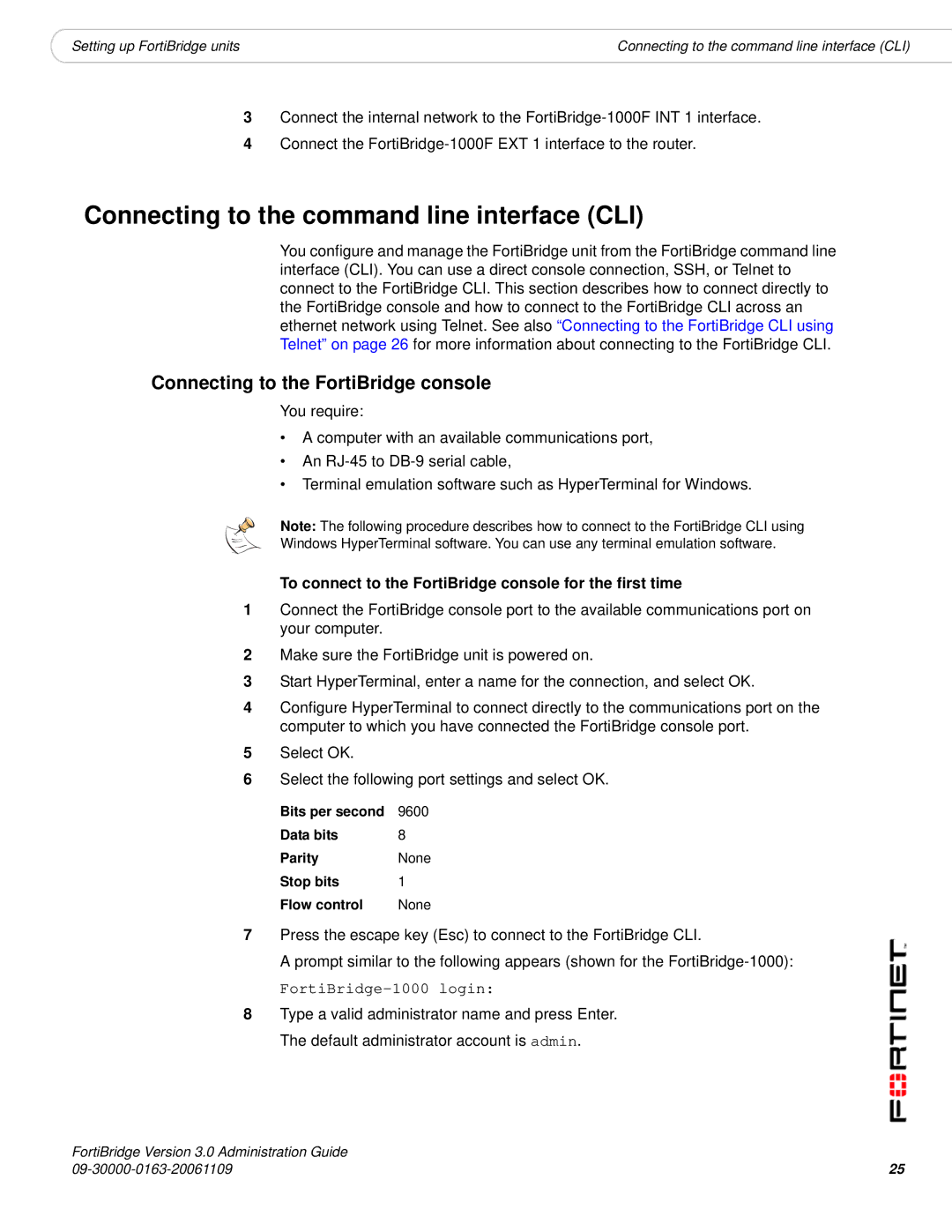
|
|
Setting up FortiBridge units | Connecting to the command line interface (CLI) |
3Connect the internal network to the
4Connect the
Connecting to the command line interface (CLI)
You configure and manage the FortiBridge unit from the FortiBridge command line interface (CLI). You can use a direct console connection, SSH, or Telnet to connect to the FortiBridge CLI. This section describes how to connect directly to the FortiBridge console and how to connect to the FortiBridge CLI across an ethernet network using Telnet. See also “Connecting to the FortiBridge CLI using Telnet” on page 26 for more information about connecting to the FortiBridge CLI.
Connecting to the FortiBridge console
You require:
•A computer with an available communications port,
•An
•Terminal emulation software such as HyperTerminal for Windows.
Note: The following procedure describes how to connect to the FortiBridge CLI using
Windows HyperTerminal software. You can use any terminal emulation software.
To connect to the FortiBridge console for the first time
1Connect the FortiBridge console port to the available communications port on your computer.
2Make sure the FortiBridge unit is powered on.
3Start HyperTerminal, enter a name for the connection, and select OK.
4Configure HyperTerminal to connect directly to the communications port on the computer to which you have connected the FortiBridge console port.
5Select OK.
6Select the following port settings and select OK.
Bits per second | 9600 |
Data bits | 8 |
Parity | None |
Stop bits | 1 |
Flow control | None |
7Press the escape key (Esc) to connect to the FortiBridge CLI.
A prompt similar to the following appears (shown for the
FortiBridge-1000 login:
8Type a valid administrator name and press Enter. The default administrator account is admin.
FortiBridge Version 3.0 Administration Guide | 25 |
